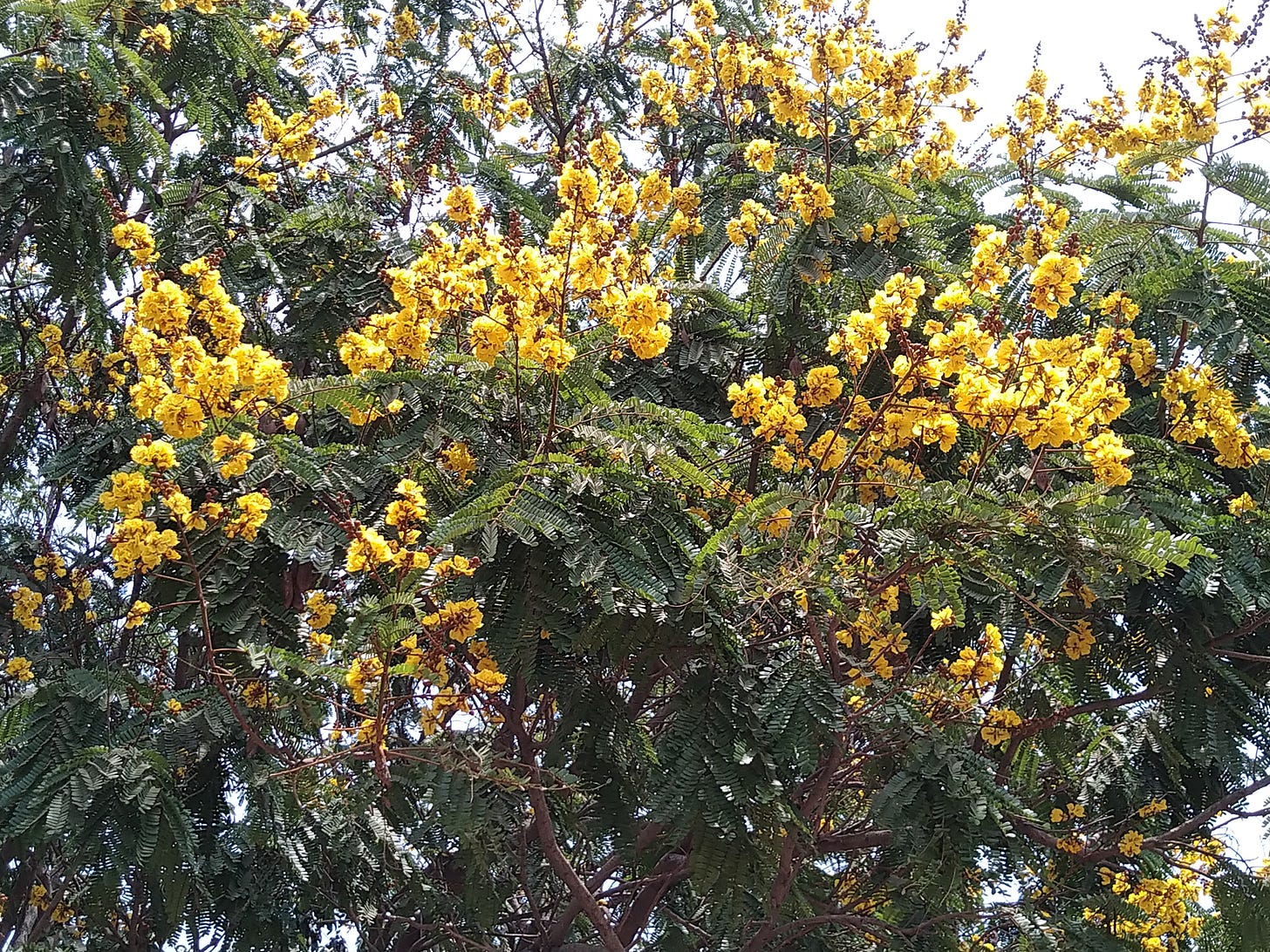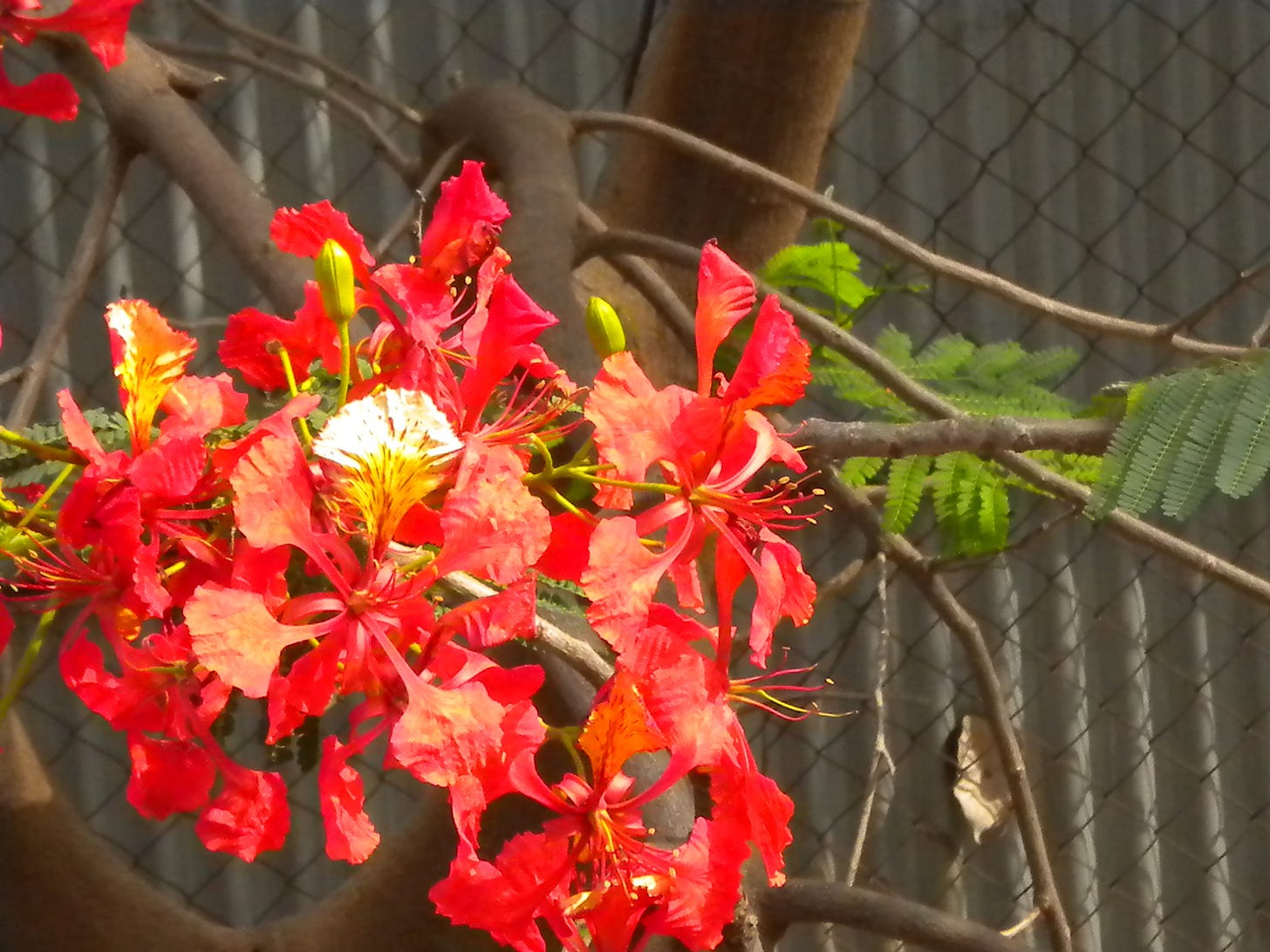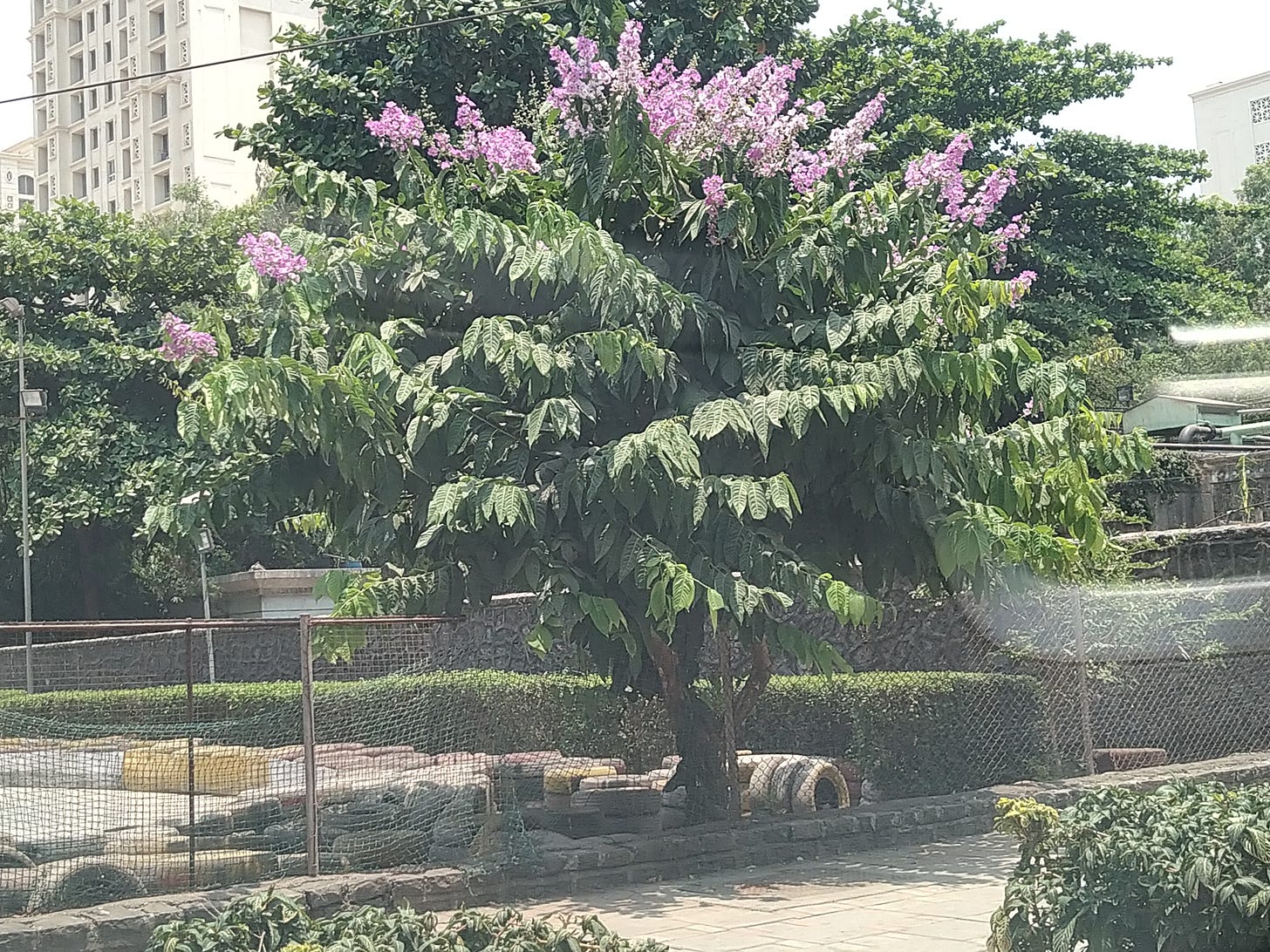Urbania has as it's defining features greenery and a big part of the flora are planted avenues of trees. The road from Saket leading into Urbania and the roads abutting Azziano, Acura and Atelier have been planted with rows of trees still to bear flowers in some cases. There are more trees inside Urban Farming for those interested. Here we get to learn five trees that are most common at Urbania. In coming years these trees will grow and make Urbania cooler and more colourful. Trees are most simple way to reduce heat and absorb dust and ones listed below will do that for Urbanians.
Happy tree surfing.
Copper Pod: This is probably most common tree within Urbania and even outside on the highway. A tree planted for it's fragrant yellow flowers, it is a tall tree with rough bark. It has compound leaves that are dark green, yellow flowers and copper coloured pods that give it it's name. All roads within Urbania have Copper Pod trees. The yellow flowers create a carpet of yellow when the trees are in bloom (in April and May) which you can go out and see right now.

Gul Mohur: The avenue in the road divider from Atelier towards Acura has Gul Mohur or May Flower (though the flower may be borne in April too). A tree whose leaves resemble those of Tamarind, Gul Mohur is a popular Indian avenue tree. The unopened buds can be opened up to make a game of the stamens with two sides fighting to knock off the anthers of the opposite side (a favourite childhood pastime of mine). The bright red Gul Mohur borne in clumps are attractive and thus favoured in cities. The large pods resemble giant beans and resemble swords when mature (in Kannada we hence call them Sword Fruit) and are a good source of fuel in wood fired stoves. As they grow shallow rooted, Gul Mohurs support themselves by putting out extensions from roots called buttresses. These buttress roots do stabilise the tree but in high rains and winds Gul Mohurs are trees that commonly topple and create barriers on India City roads.

Rain Tree: The roads in front of Azziano ABC and HIJ have seedlings of this tree which are still very young. The rain tree, an exotic one can grow very large with trunks of old trees needing maybe two to three persons to encircle its trunk. Rain trees are found in old areas of Mumbai but in recent years have been affected by uncontrolled mealy bugs that have killed many. Rain trees got their name due to drops of liquid coming down from their leaves (actually due to insects called aphids which secrete the sweet honey dew) and being mistaken for rain drops. Rain trees have an umbrella like structure and bear white flowers with pink tips and resembling powder puffs. Their fruits which are pod like have a sweet smelling pulp which as a child I would collect with friends and fashion into cork like balls (which don't bounce though). The pulp is eaten by cattle. Rain trees develop a flaky bark as they grow older and are recognised by it. Urbania's rain trees have neither flowered nor borne pods yet. Also they are afflicted by mealy bugs and fungus. Our home gardens at balconies is affected by mealy bugs of rain trees as the bugs are blown by air and find their way to our plants and then kill them by sucking on the sap.
Crepe Myrtle: Planted inside Urban Farming this tree is right now in flower. It gets it's name from the purple crepe paper like delicate flowers which have yellow centres. Myrtles are found with white and pink flowers too. The flowers are very attractive and are borne in clumps. This is a small tree and is leas than 6 to 8 feet tall. Grown along water bodies the tree is called River Hibiscus in Kannada. Crepe Myrtle is a popular tree across Thane so you'll find it in other parts of the city too.

The African Tulip Tree (Spathodea campanulata): A tall tree with dark green shiny leaves with white spots on the trunk, one of the identifying marks. Most time of the year the tree is not in flower and more so in summer. The orange flowers resemble tulips giving it the name African Tulip Tree. The flowers are borne in clusters with the unopened buds filled with water. When pressed the buds squirt water and doing that was a common childhood prank for me. The tree is thus commonly called pichkari. Large clusters of flowers on one tree and many trees in flower simultaneously are a sight to behold.



